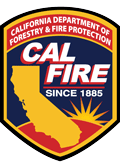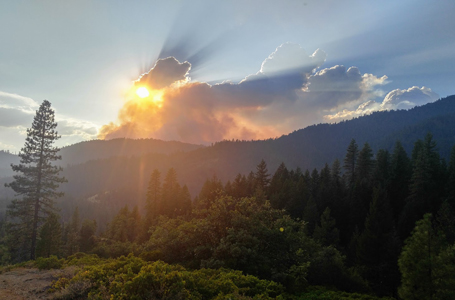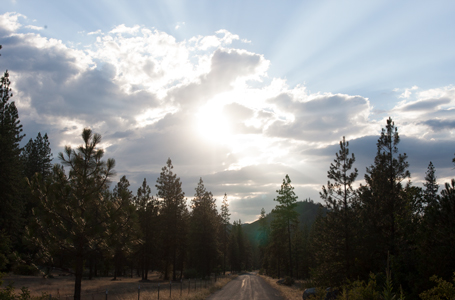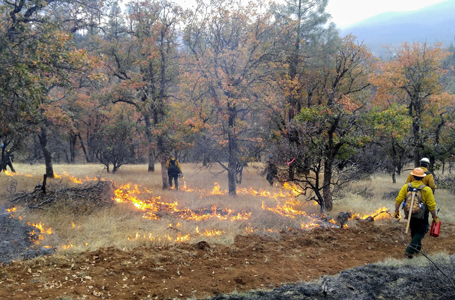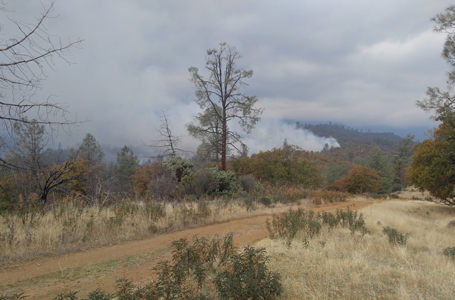Forest Health / Fuels Reduction
Trinity County RCD's Goals for Forest Health include:
- Provide technical assistance to private landowners to improve forest health.
- Facilitate countywide strategic planning for fuels management and forest health.
- Work with CalFire to develop community wildfire protection plans (CWPP).
- Develop GIS data and analysis for planning.
- Facilitate neighborhood meetings to plan neighborhood fuels reduction projects.
- Participate in Trinity County Fire Safe Council to coordinate management of fire safety/forest policy on public and private lands.
- Assist landowners in applying for state or federal cost share programs.
The result of our work in this area reduces the risk of catastrophic fire by improving forest health.
Trinity County RCD Fuels Reduction Projects
The District has been implementing fuels reduction projects in Trinity County for well over 20 years. Since the inception of the program, our crews have thinned thousands of acres of forest and created hundreds of miles of shaded fuel breaks. These actions protect homes, assist firefighters, and improve vital ecosystems.
Fuels reduction is a process that reduces the risk of catastrophic wildfire by strategically removing certain types of vegetation. There are multiple ways to accomplish fuels reduction. The method most commonly employed by the District involves a crew that removes the most problematic vegetation by hand, while retaining plants and trees that are ecologically and aesthetically important. Other methods include prescribed fire and machine mastication. Each method has benefits and drawbacks, but ultimately the process of fuels reduction creates a healthier, more resilient landscape with a reduced risk of uncontrolled wildfire.
Current Fuels Projects
California Fire Safe Council CWPP Implementation Phase I : Oregon Mountain area of Weaverville.
In 2017, the RCD began work on the California Fire Safe Council CWPP Implementation Phase I project, which required mechanical thinning and chipping in the Oregon Mountain area of Weaverville. With assistance from the Trinity County Conservation Camp, we’ve completed 50 acres of fuel reduction in the Oregon Mountain area to date, including nearly 1.2 miles of roadside shaded break on Oregon Street, Dutch Ln, and private driveways.
The benefits of fuel reduction activities extend beyond wildfire mitigation. Shaded fuel breaks provide safe egress for residents and ingress for first responders; thinned forest stands and removal of ladder fuels provide anchor points for fire suppression and increase the chances of saving homes, and potentially lives; but these same actions also provide secondary, often unseen benefits. A large component of the vegetation along our shaded fuel break on Oregon Street, for example, is comprised of oak woodland. By selectively removing the understory vegetation and reducing competition from overly dense conifers, we’re helping improve and preserve this critical habitat type.
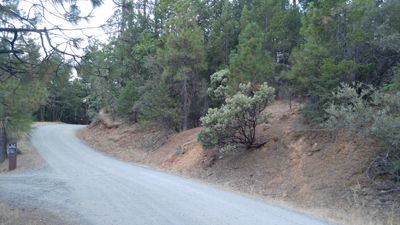 Roadside fuel break project: Before
Roadside fuel break project: Before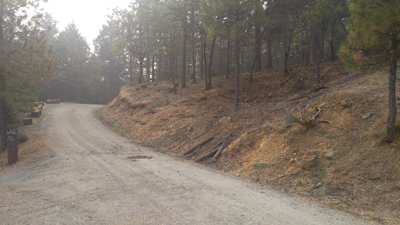 Roadside fuel break project: After
Roadside fuel break project: After